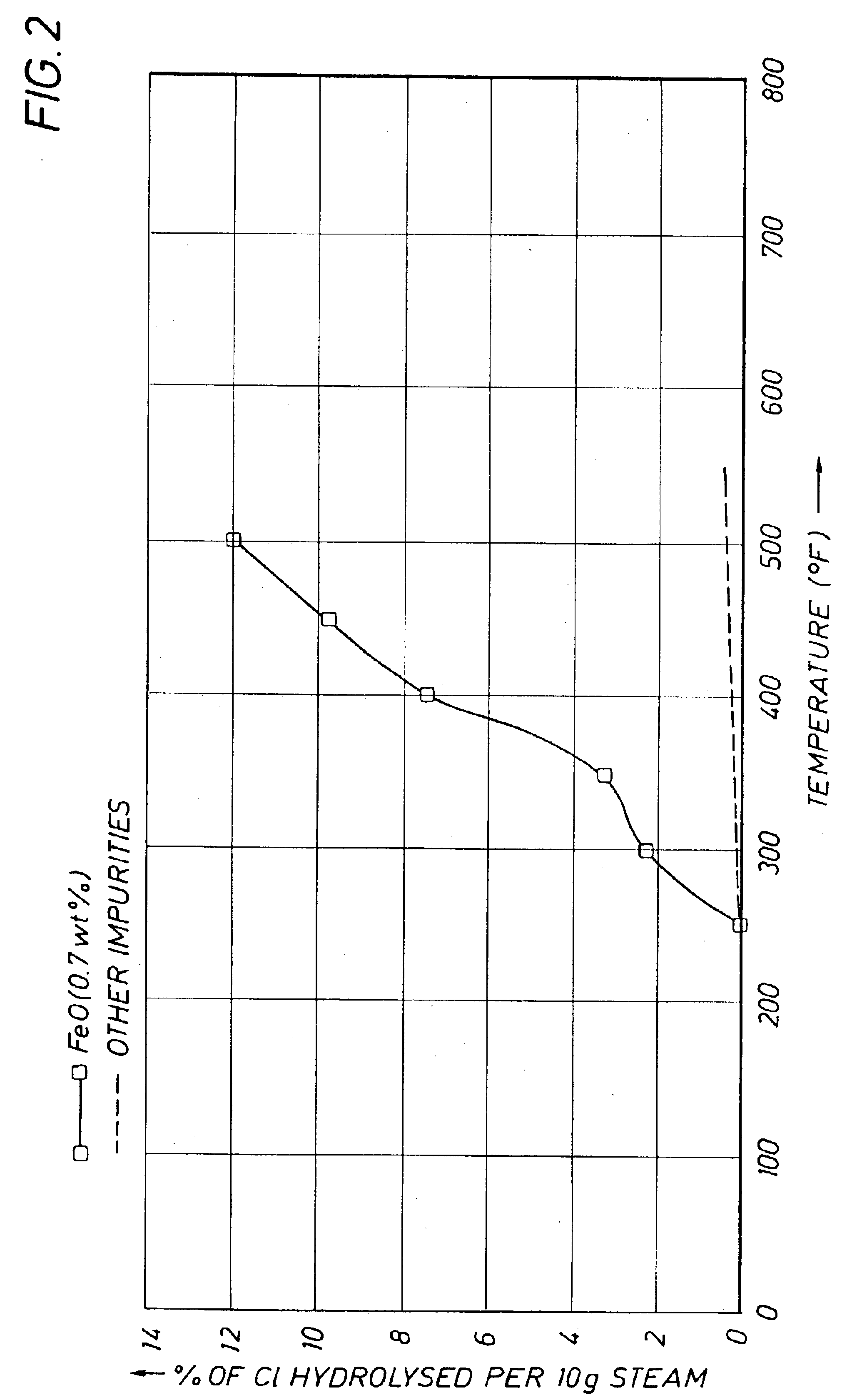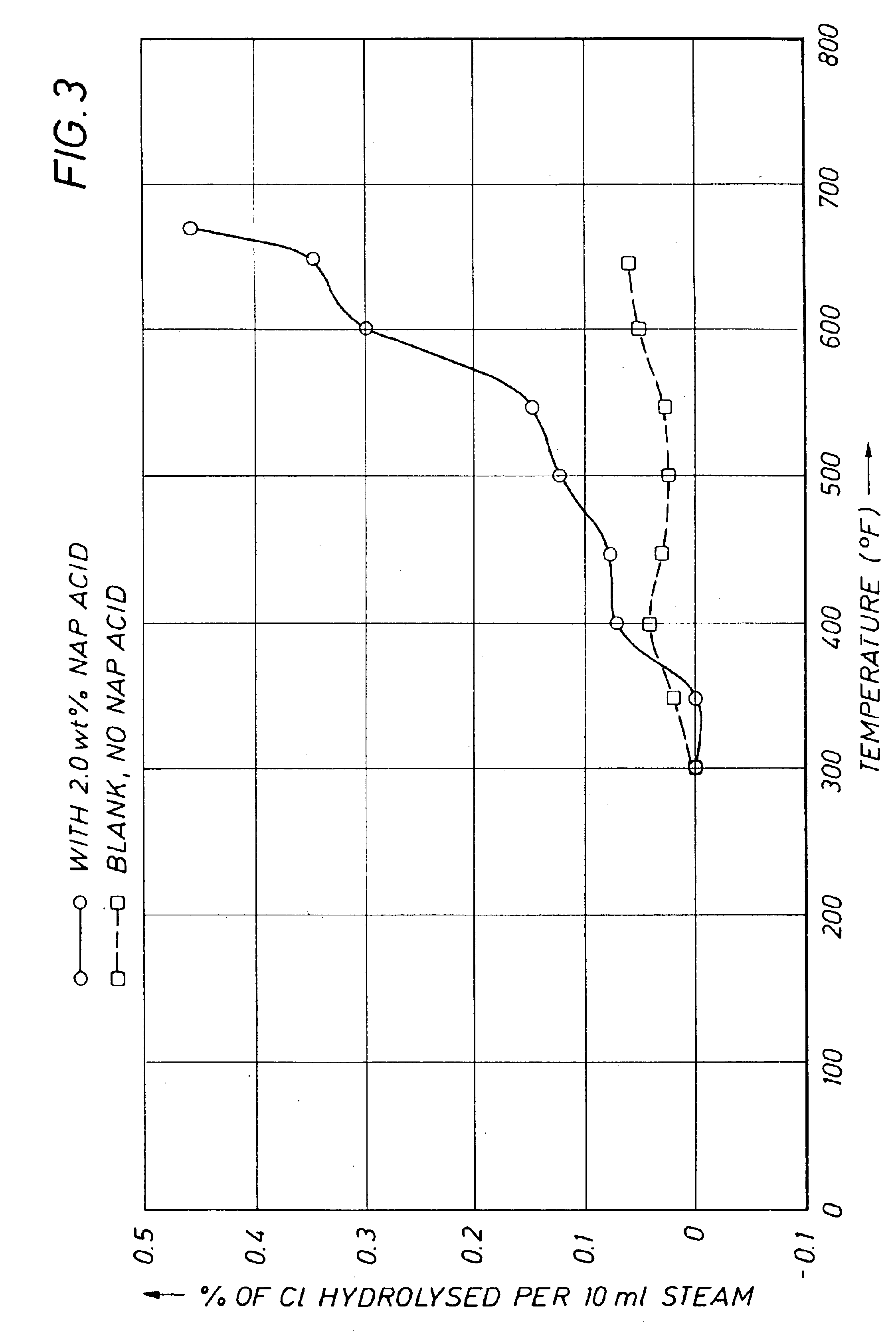Method of reducing hydrolysis in hydrocarbon streams
a technology of hydrolysis and hydrocarbon streams, applied in the direction of organic chemistry, group 5/15 element organic compounds, aqueous alkaline solutions, etc., can solve the problems of reducing hydrolysis efficiency, affecting the efficiency of hydrolysis, so as to achieve the effect of reducing hydrolysis
- Summary
- Abstract
- Description
- Claims
- Application Information
AI Technical Summary
Benefits of technology
Problems solved by technology
Method used
Image
Examples
example 1
[0076]This example demonstrates the effectiveness of using the method of the present invention to reduce the hydrolysis of calcium chloride in a hydrocarbon base such as diluted bitumen. In one case, diluted bitumen containing 0.291 grams of calcium chloride, but no treating agent (inhibitor) was subjected to steam distillation as per the method described above. In the second case, the same diluted bitumen blend, together with 4 g of a treating agent inhibitor which was a calcium overbase having a total base number of 400 was also subjected to steam distillation. The results are shown graphically in FIG. 4. As can be seen, with no inhibitor significant hydrolysis of the calcium chloride occurred at a temperature of 450°. This is to be contrasted with the sample that contained the treating agent in which no significant hydrolysis of the calcium chloride was observed.
example 2
[0077]This example demonstrates the ability of the method of the present invention to prevent the hydrolysis of mixed chloride salts in a synthetic crude. The synthetic crude was as described above, e.g., mineral oil containing iron oxide, iron sulfide, silica and drilling mud in the amounts shown in FIG. 2. The total volume of mineral oil was 800 ml. which contained 3.5 g. sodium chloride, 1.0 g. calcium chloride, 0.5 g. magnesium chloride, and 8 g. of naphthenic acid. The treating agent employed was a magnesium overbase compound having a total base number of 600. A sample of the synthetic crude with the chloride salts and no treating agent was subjected to steam stripping as described above. A second sample was also subjected to steam stripping, except in this case, there were three parts of inhibitor for five parts of combined chloride salts. A third experiment was conducted in which there were six parts of inhibitor for five parts of combined salts. The results are shown in FIG....
PUM
| Property | Measurement | Unit |
|---|---|---|
| temperature | aaaaa | aaaaa |
| temperature | aaaaa | aaaaa |
| temperature | aaaaa | aaaaa |
Abstract
Description
Claims
Application Information
 Login to View More
Login to View More - R&D
- Intellectual Property
- Life Sciences
- Materials
- Tech Scout
- Unparalleled Data Quality
- Higher Quality Content
- 60% Fewer Hallucinations
Browse by: Latest US Patents, China's latest patents, Technical Efficacy Thesaurus, Application Domain, Technology Topic, Popular Technical Reports.
© 2025 PatSnap. All rights reserved.Legal|Privacy policy|Modern Slavery Act Transparency Statement|Sitemap|About US| Contact US: help@patsnap.com



